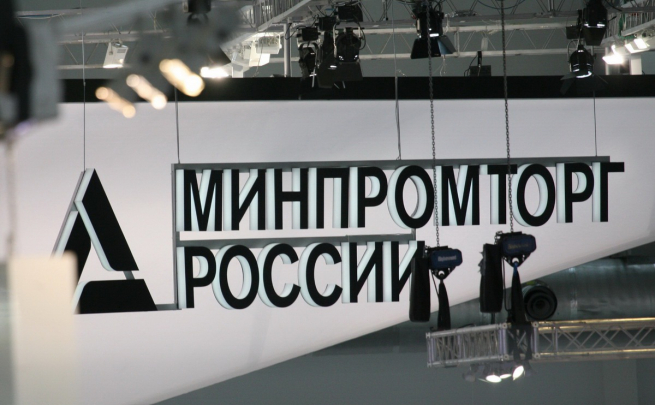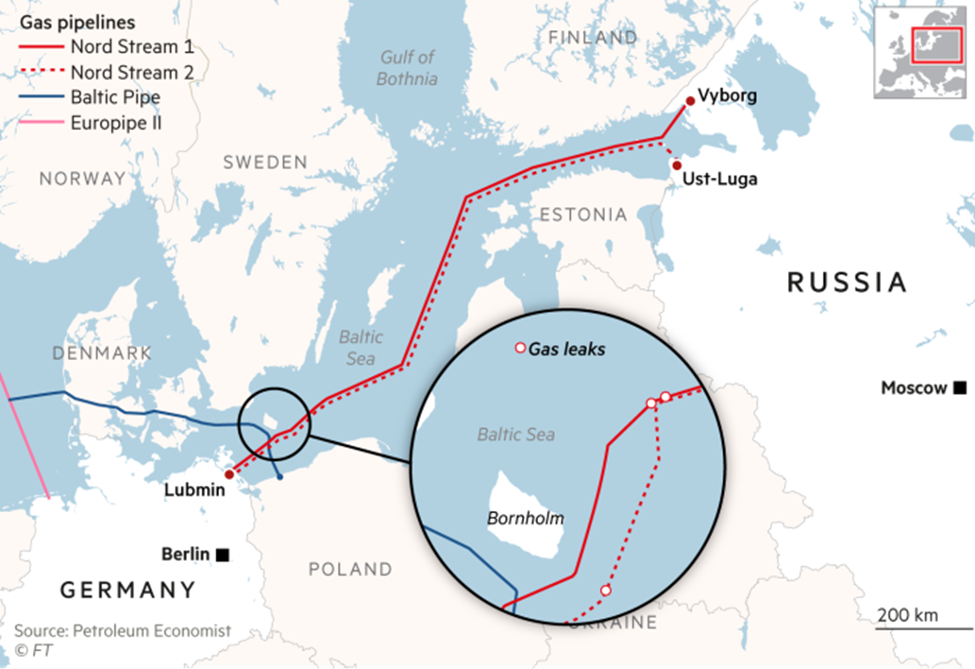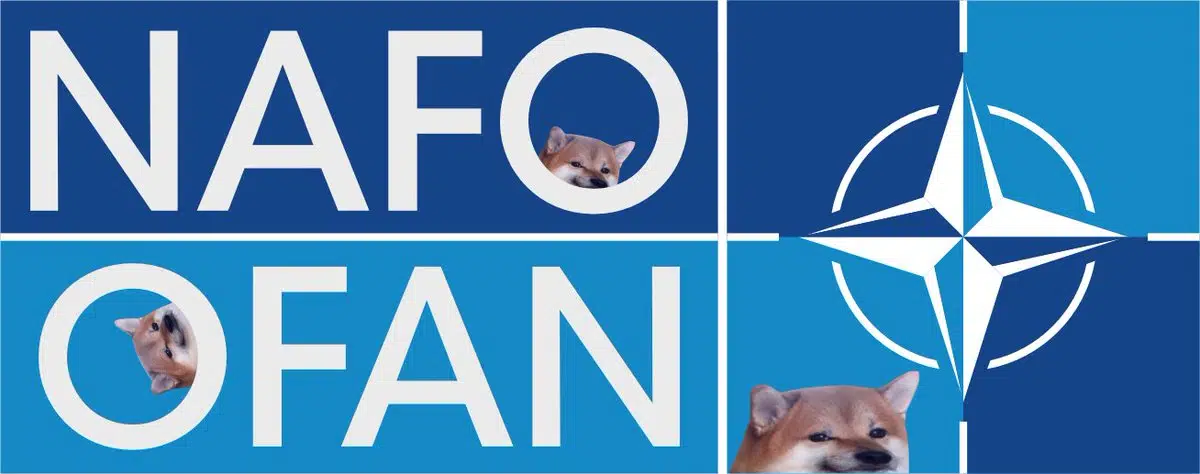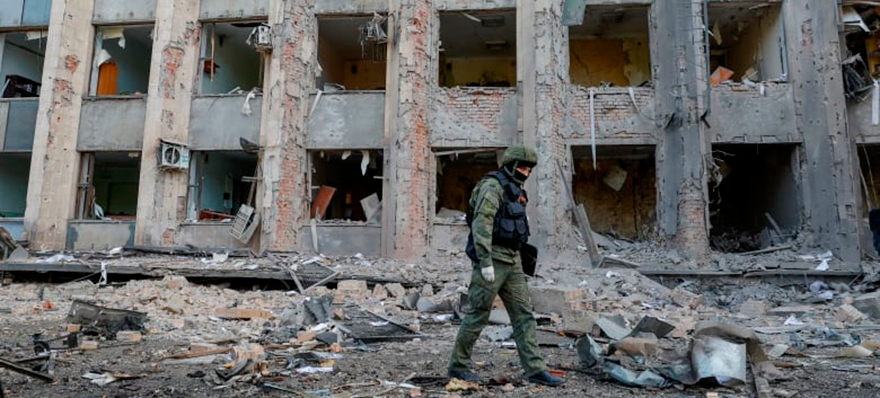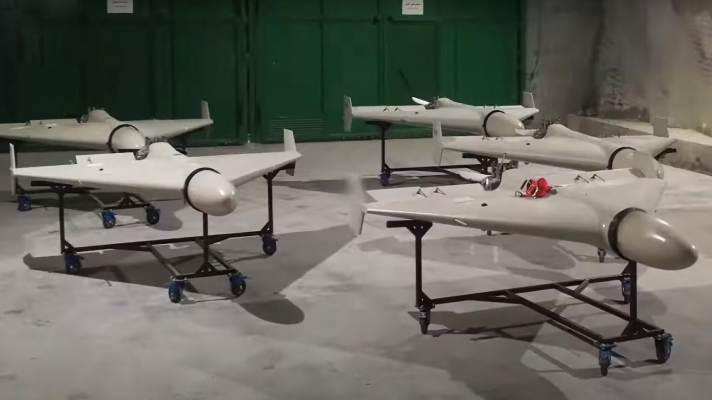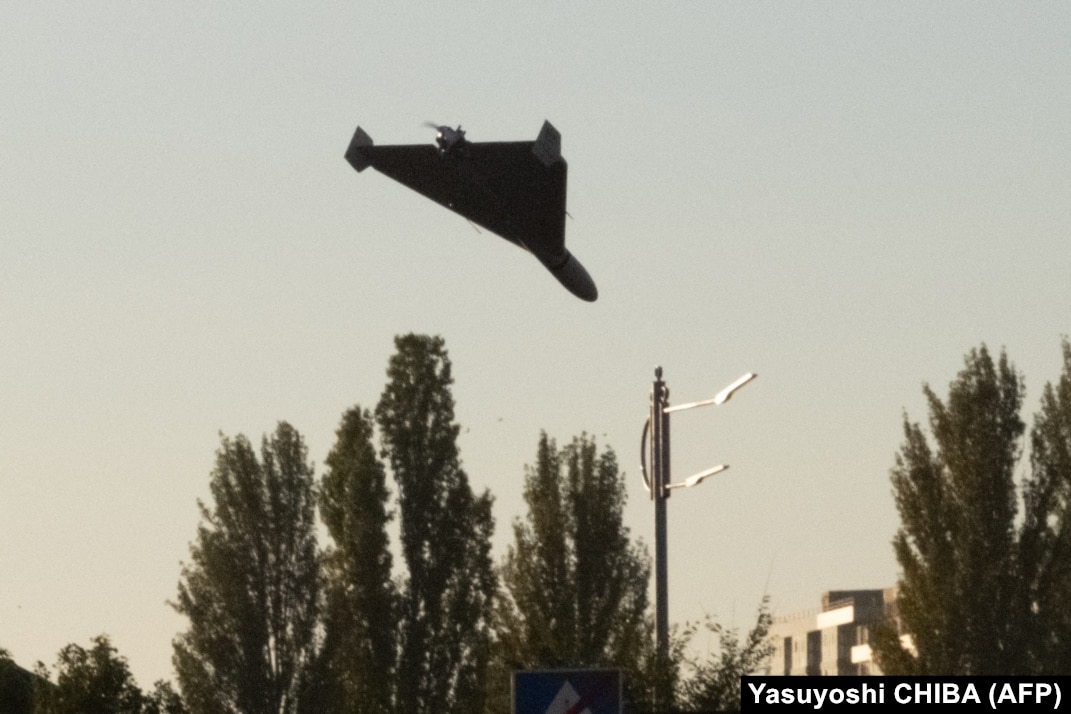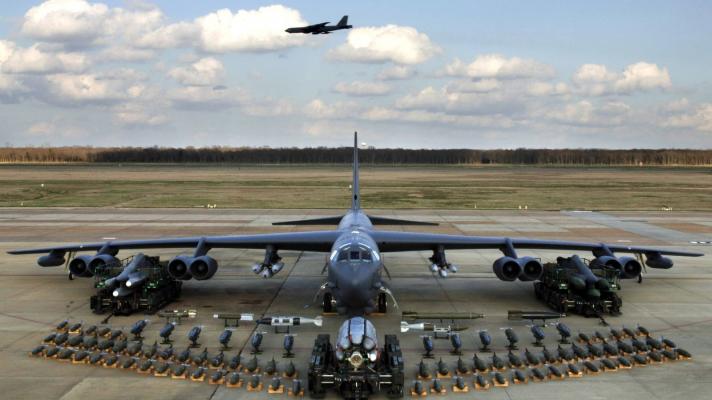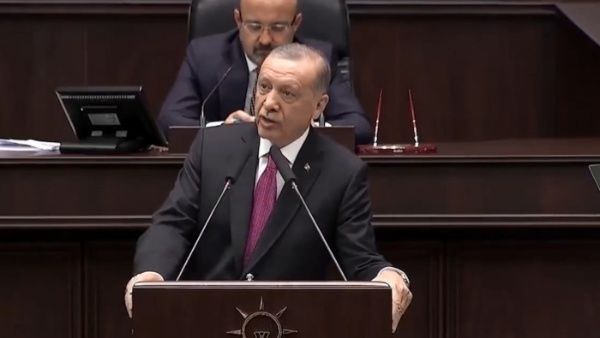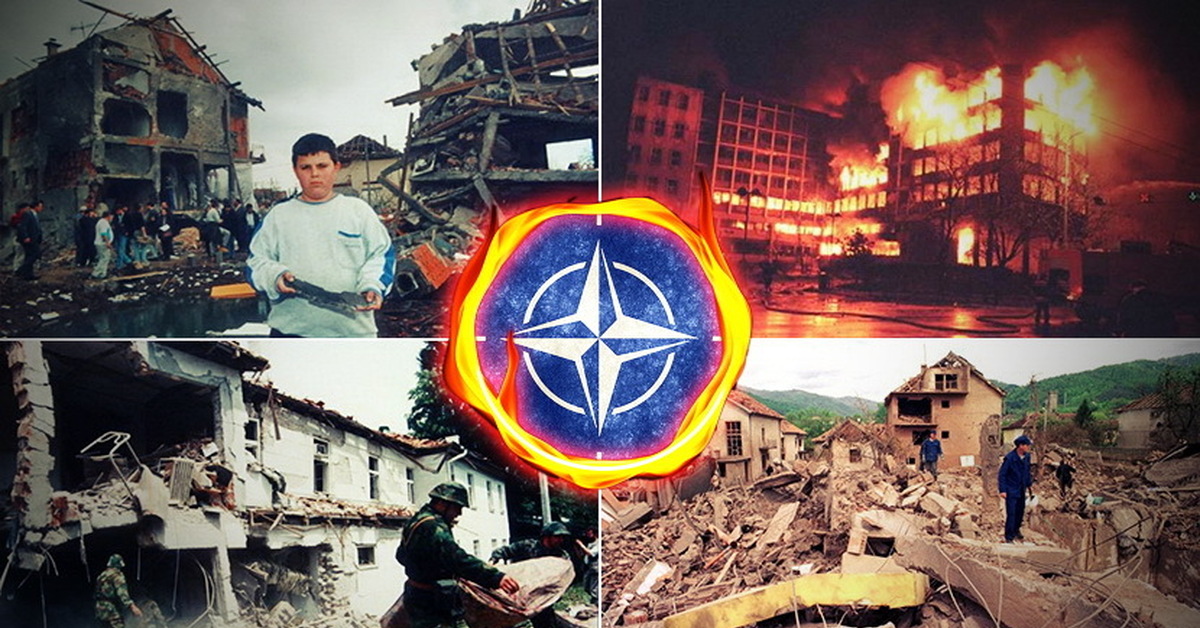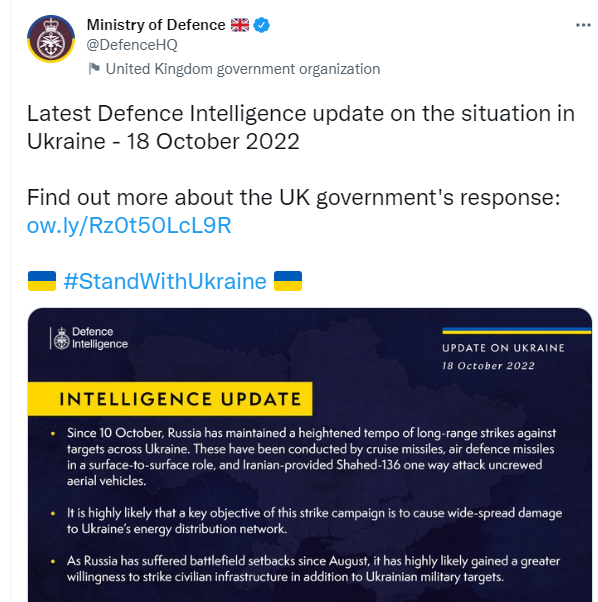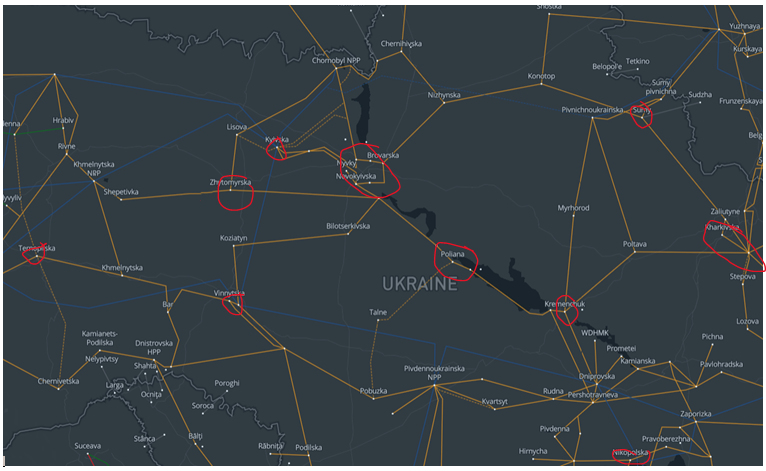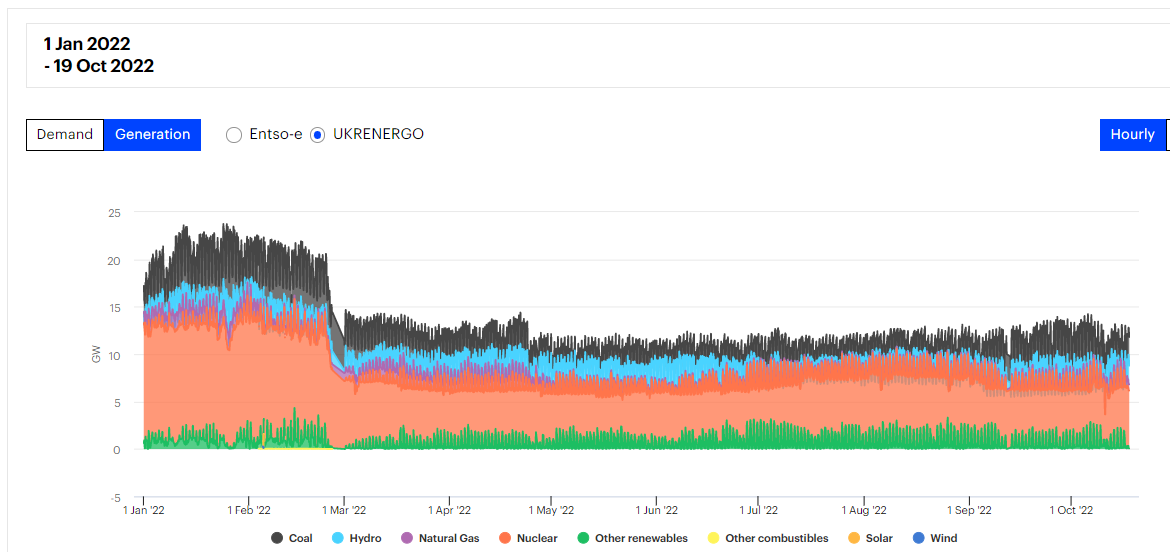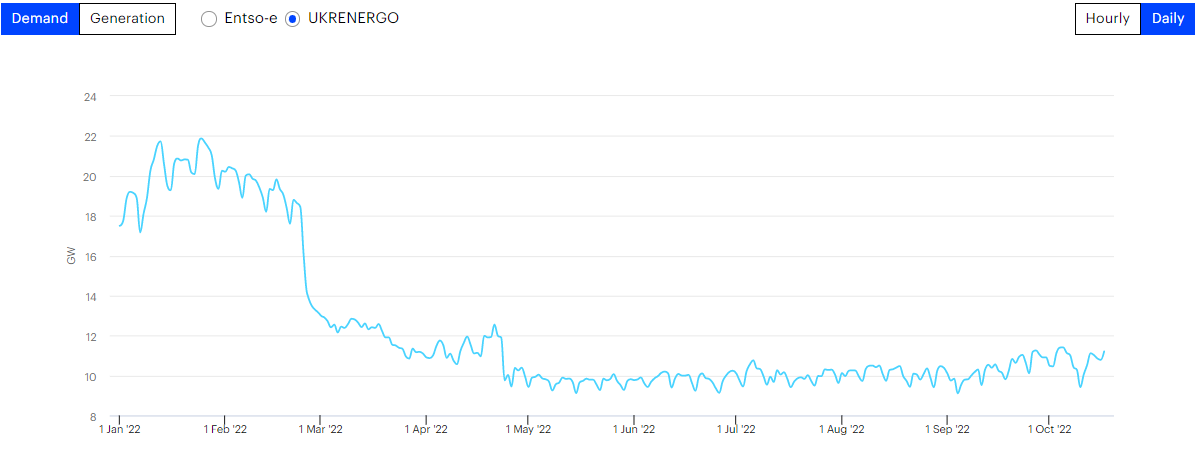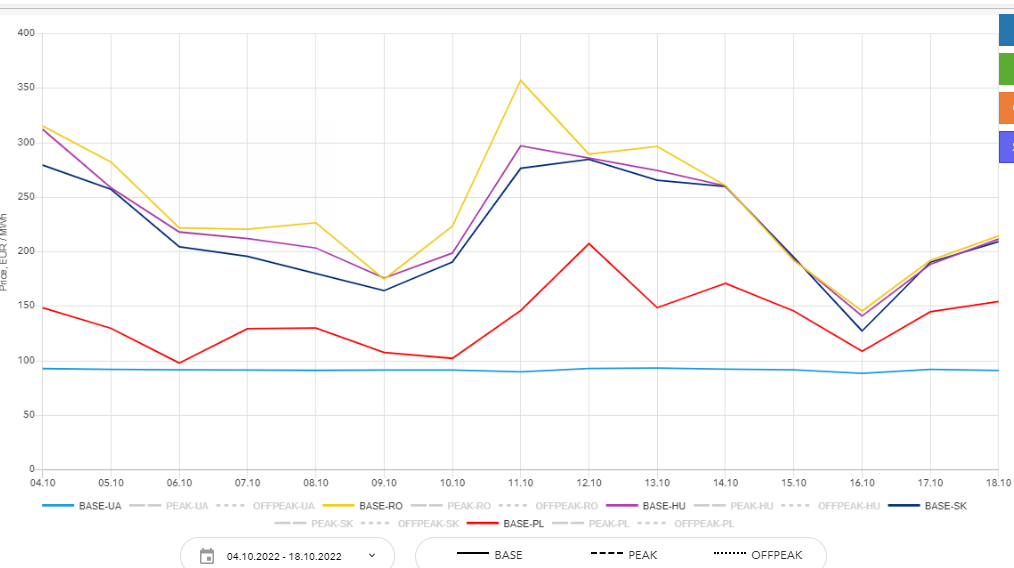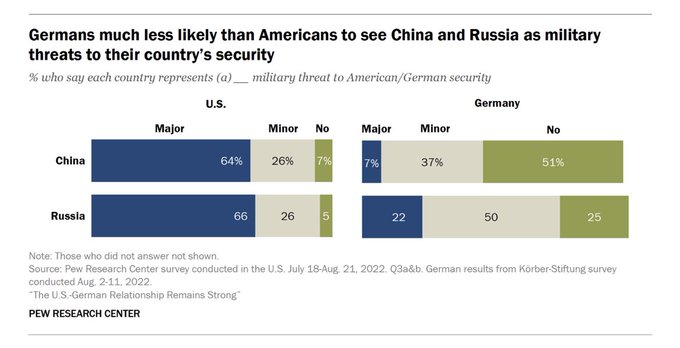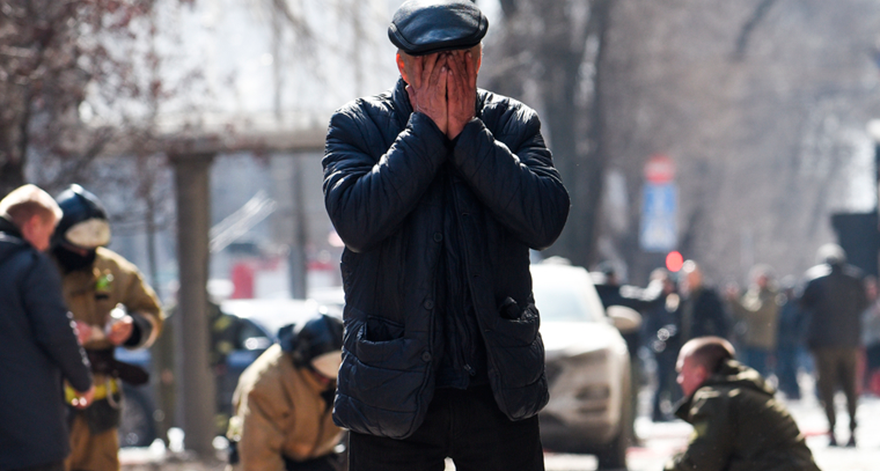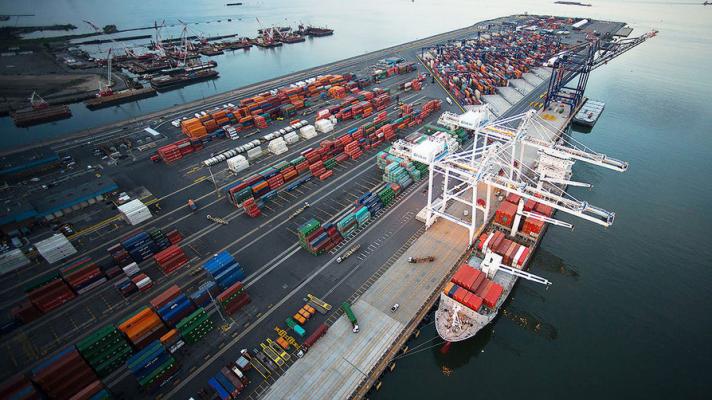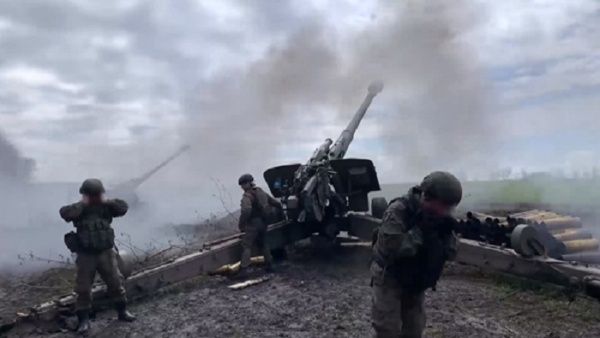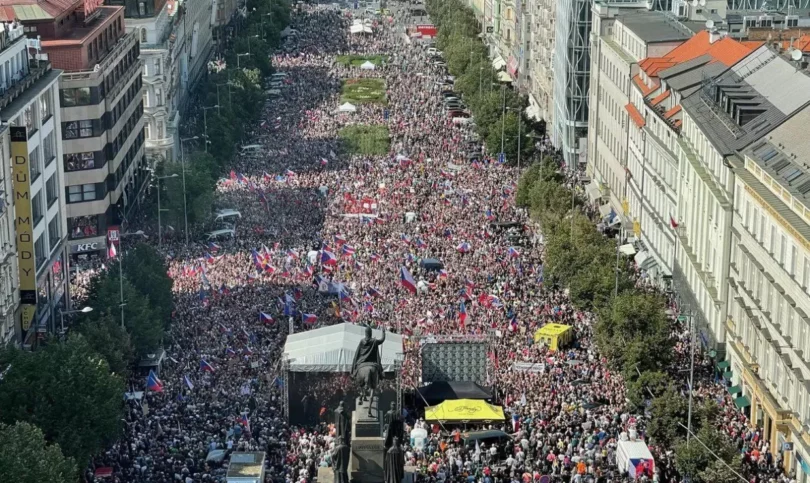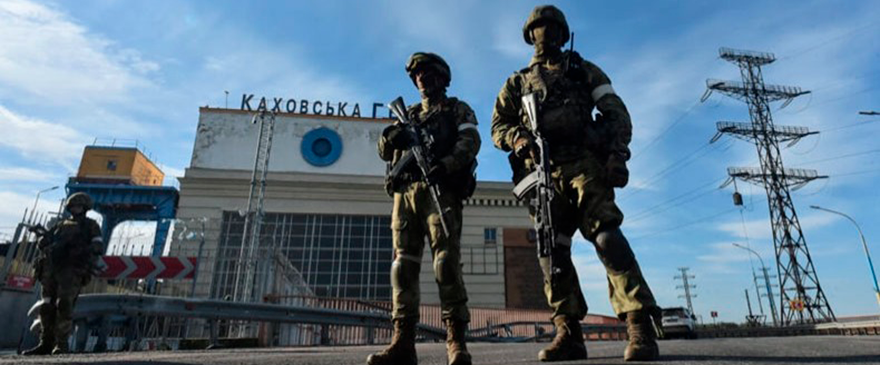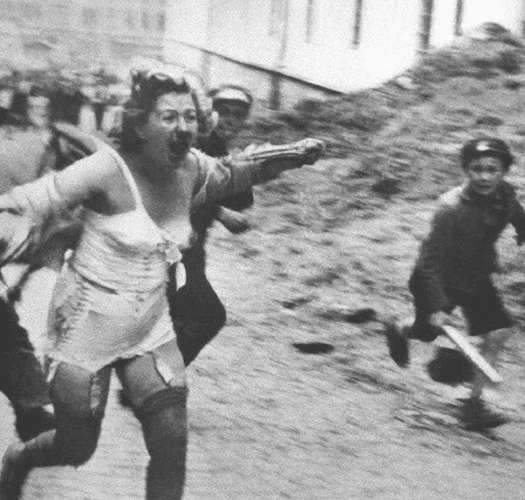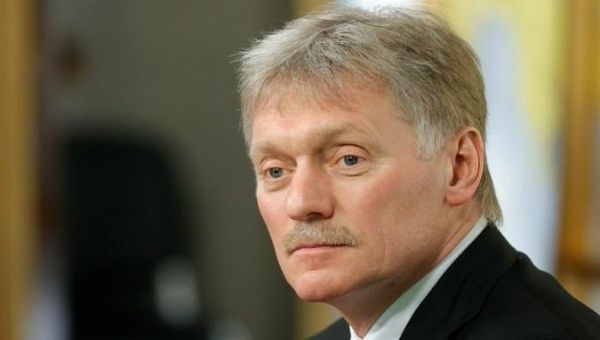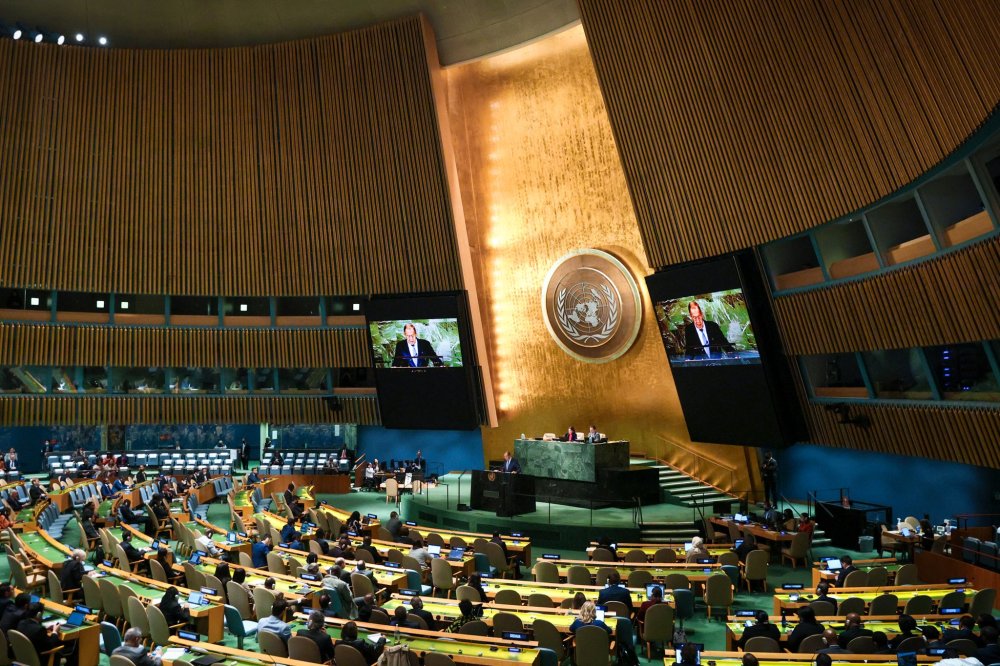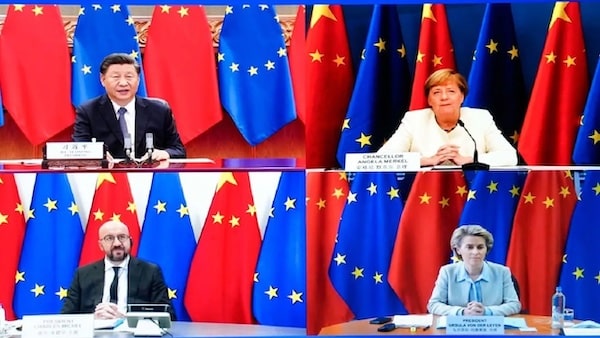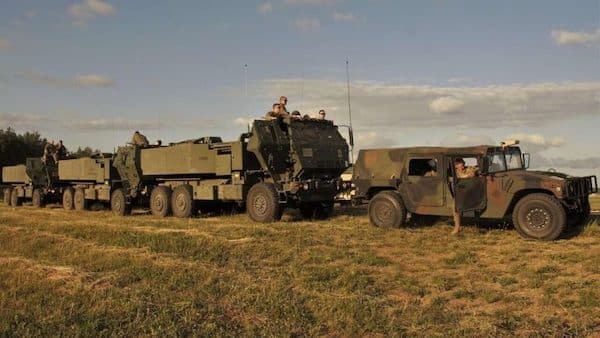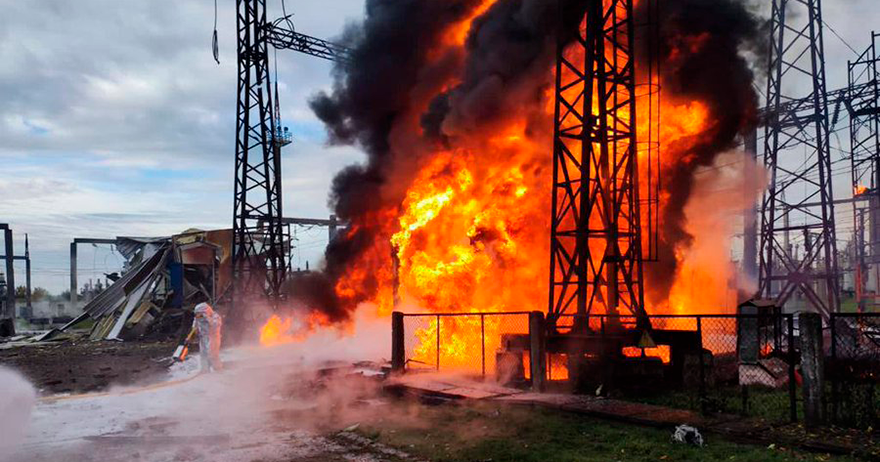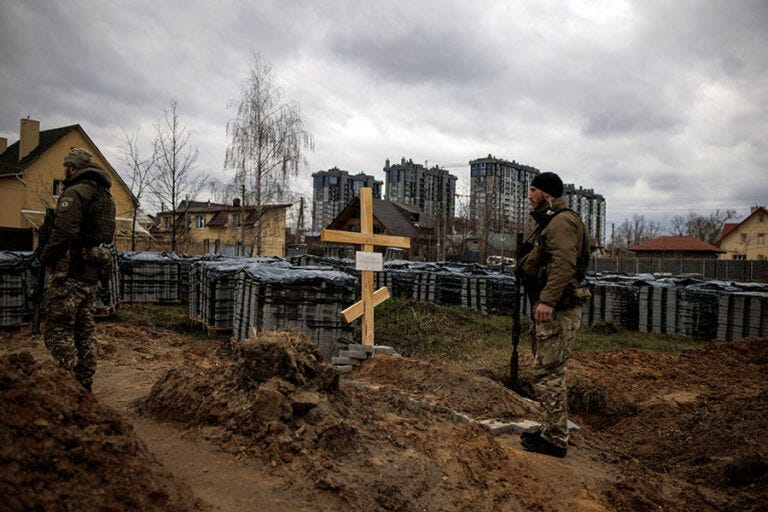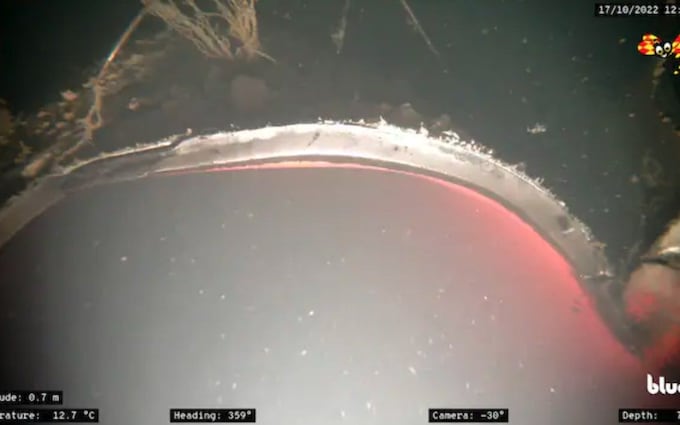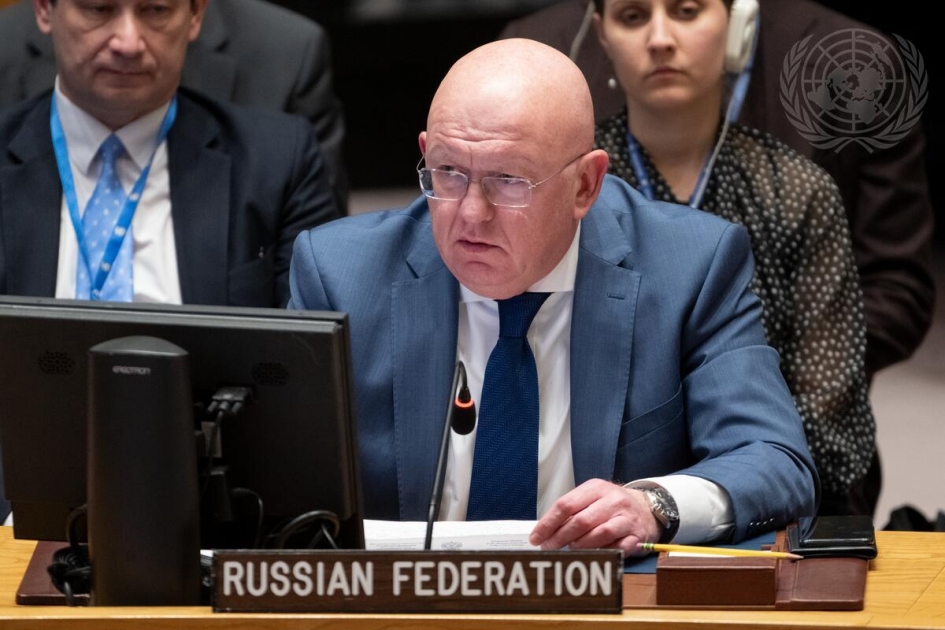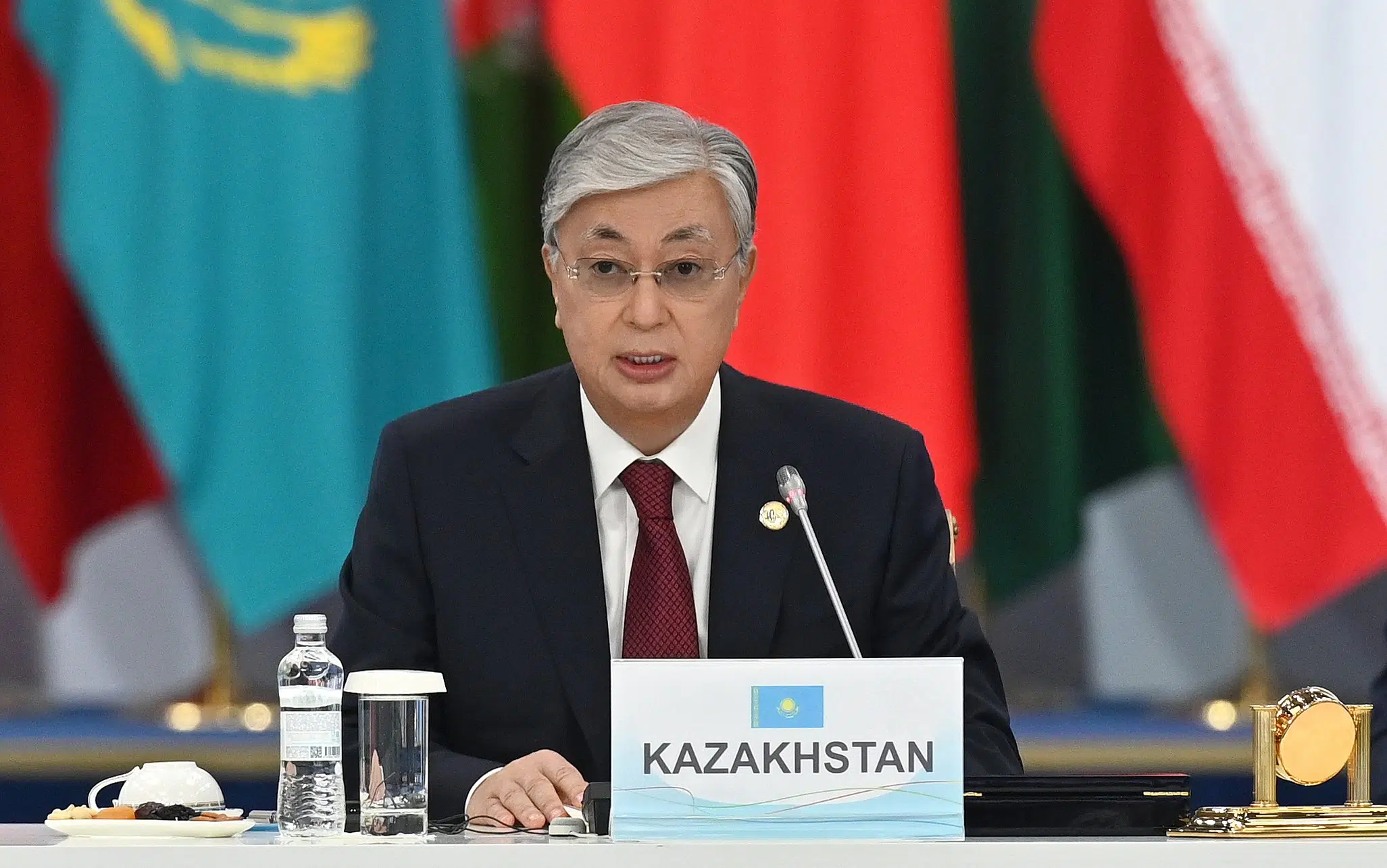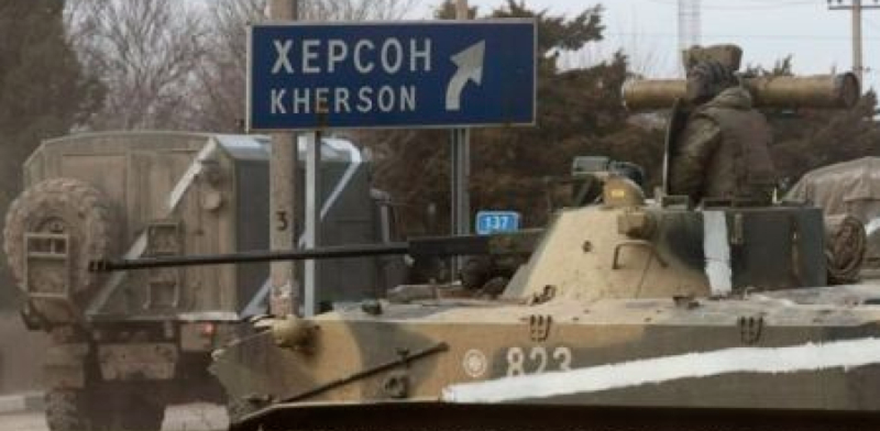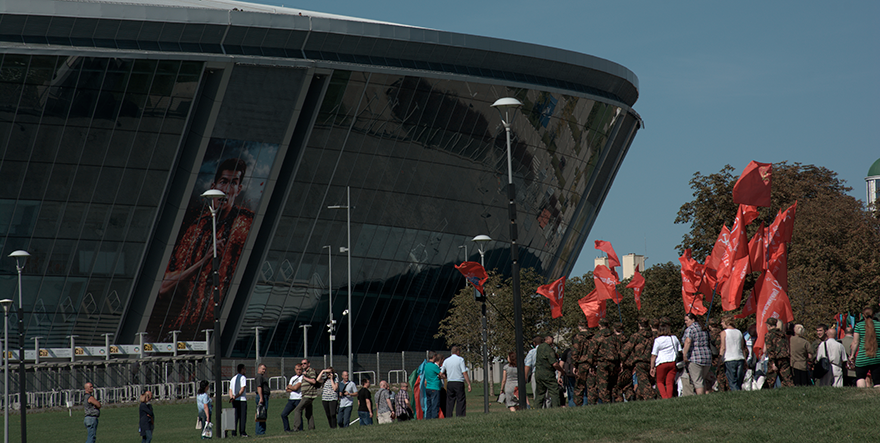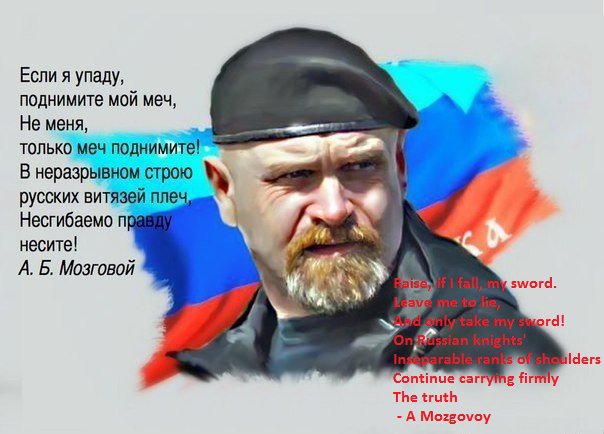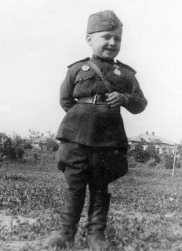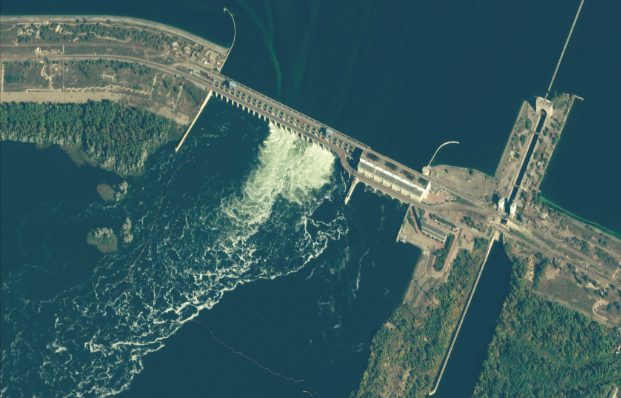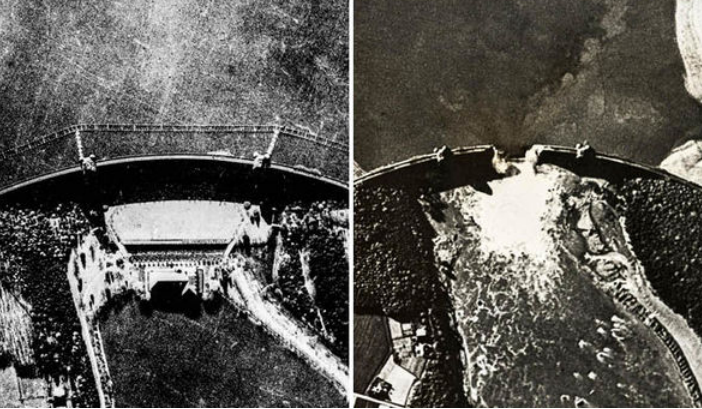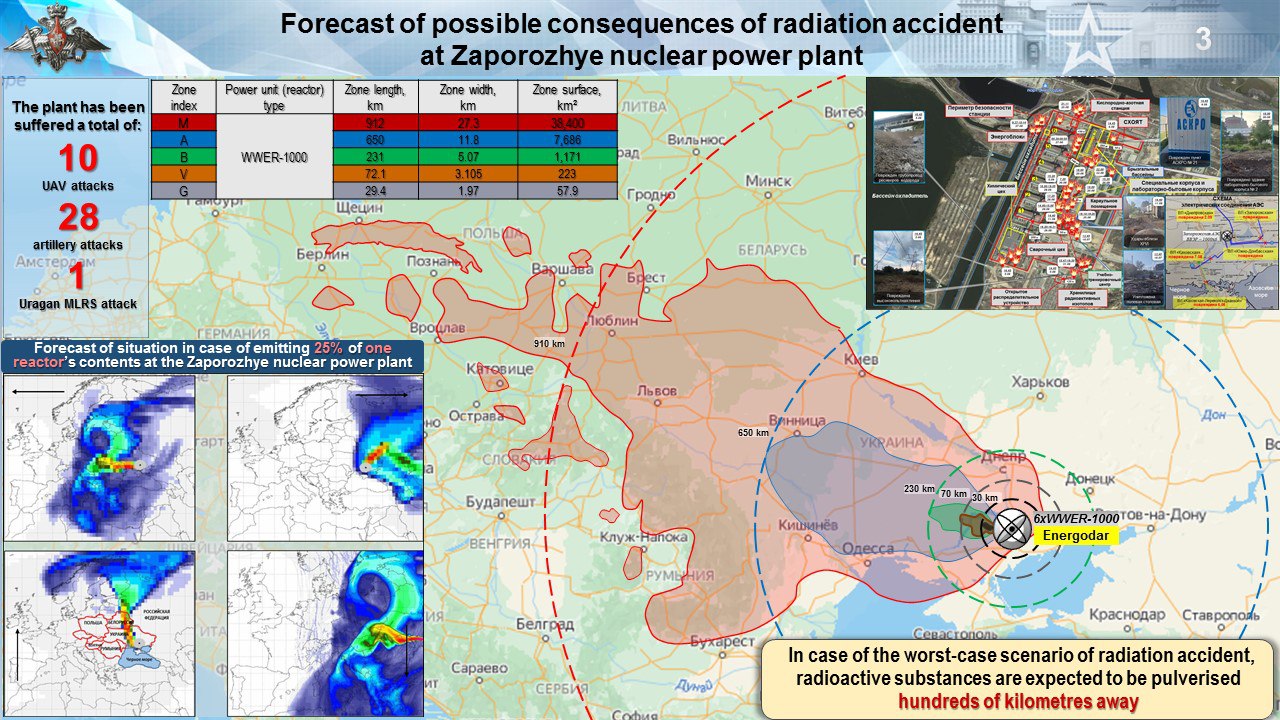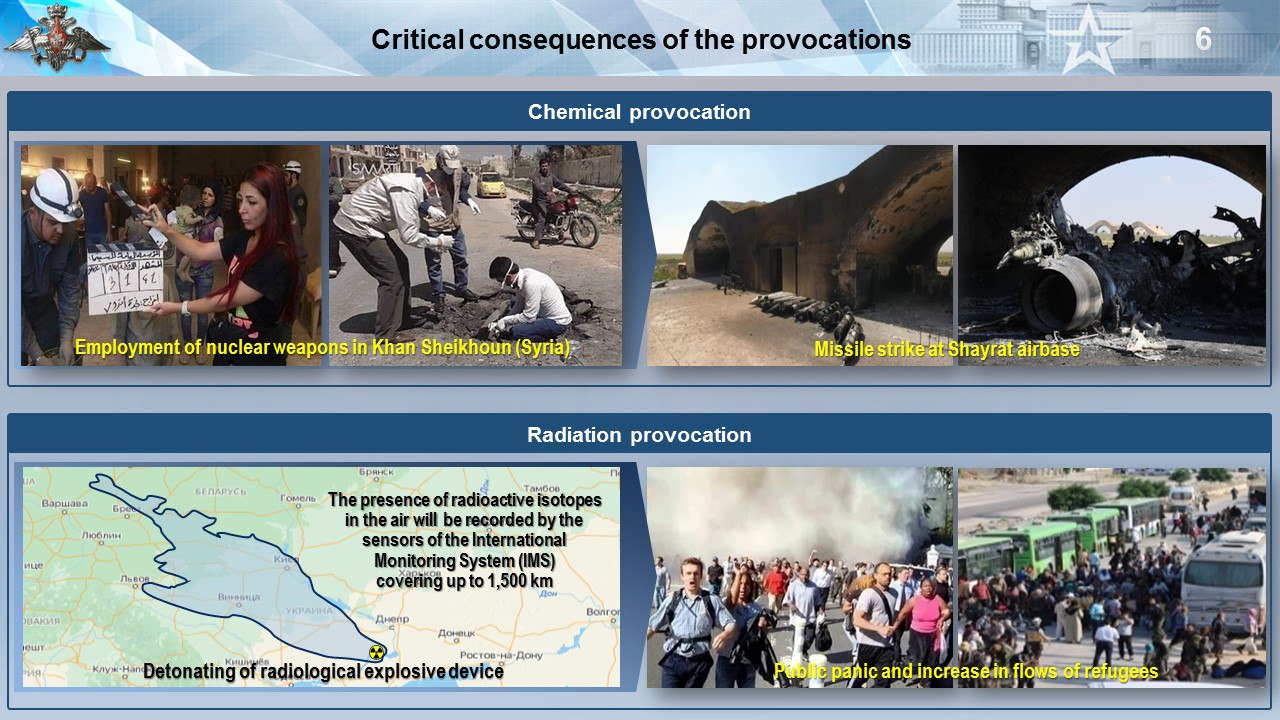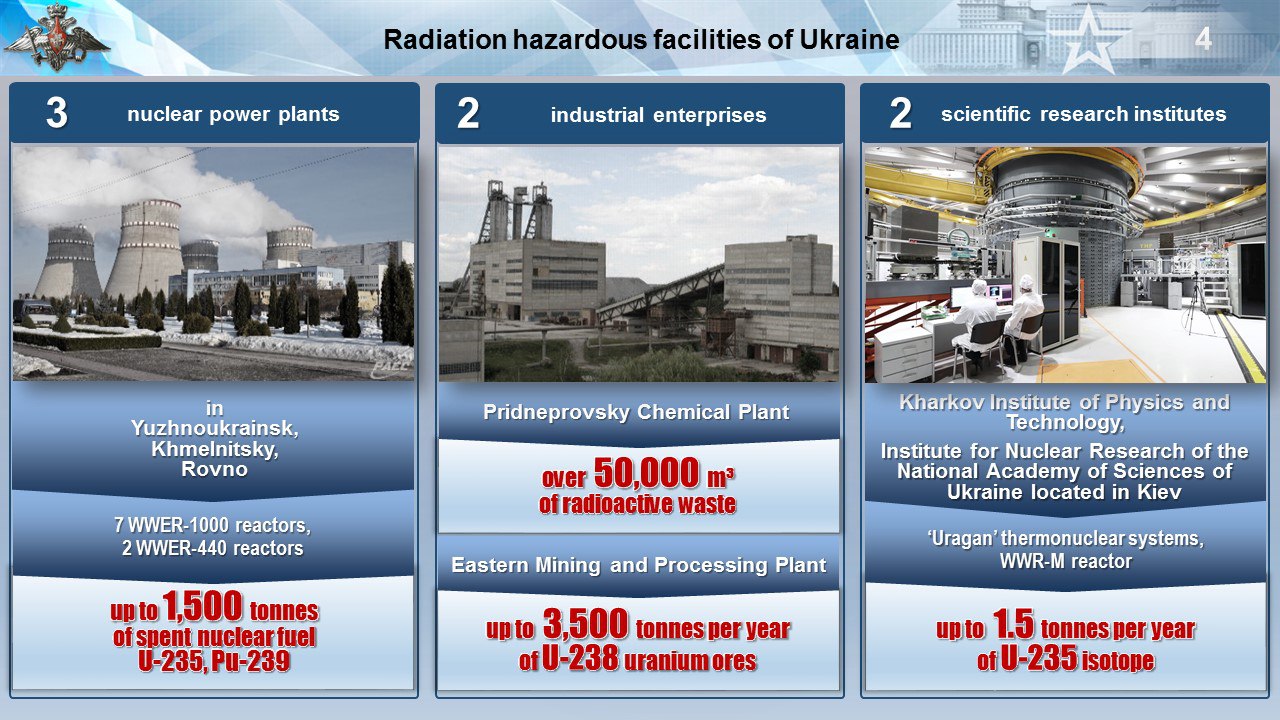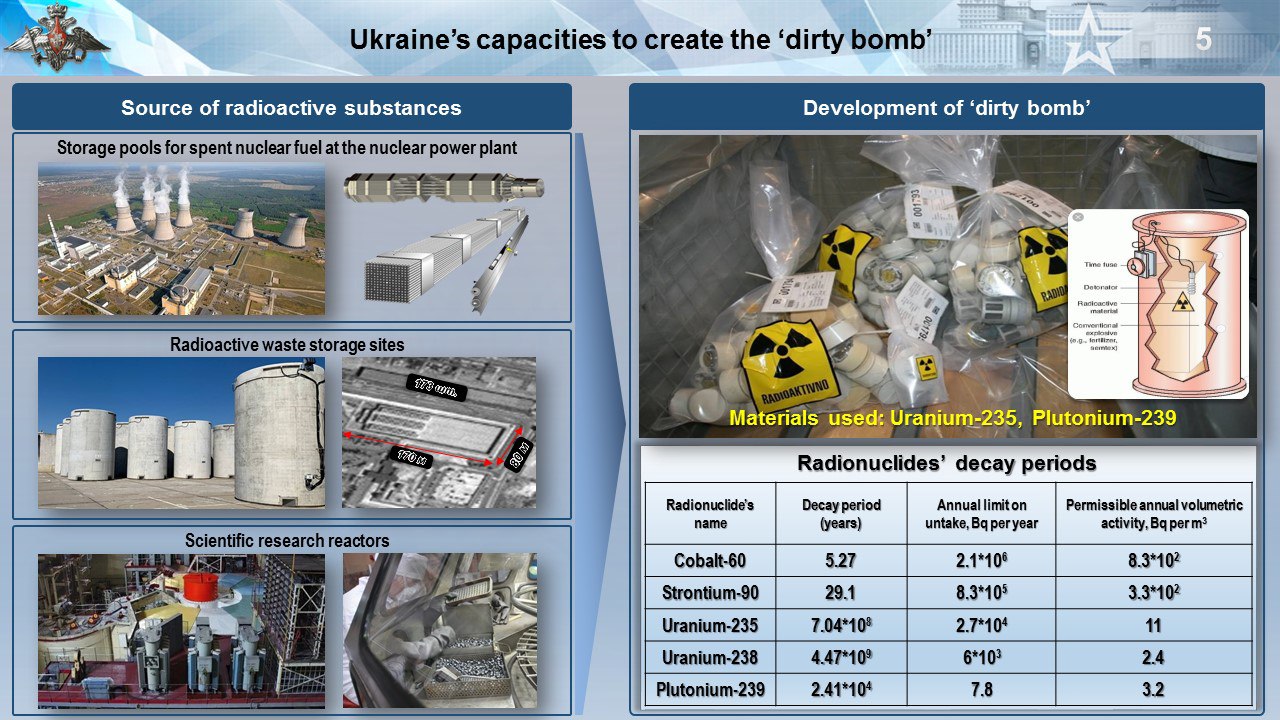POSTED BY @NSANZO ⋅ 10/19/2022

On Saturday, October 8, a device placed in a truck that was crossing the bridge that connects mainland Russia with the Crimean peninsula exploded, causing a section of the road to fall and setting fire to the train that was passing through the roads, which were also damaged. The act caused the death of half a dozen civilians and serious damage to infrastructure that is critical to Moscow. The Ukrainian joy was not long in coming, as was the issuance of a stamp commemorating the event. Throughout that weekend, the population of kyiv could be photographed next to a large replica.
The strategic importance of the bridge in supplying the Russian troops on the Kherson front has always been undeniable, but this route is even more important at the present time, awaiting the start of the battle for the city. Kherson is one of the areas most threatened by the possibility of a large-scale Ukrainian offensive. Yesterday, General Surovikin admitted the difficulties in the area and did not rule out the possibility of making "difficult decisions". Russia will start by evacuating four towns on the right bank of the Dnieper, but Surovikin's words point to a broader pullout. For the moment, there is no mention of the city of Kherson, which according to some sources intends to be converted into a "fortress city".
Any interruption in the supply of those troops right now could mean irreparable losses. Russia will have to prepare the defense of Kherson without being able to fully rely on its main supply line. However, in these two weeks, an important part of the press has focused on the symbolic value of the bridge and on the humiliation that the Russian president supposes that the country has not been able to defend the Kerch bridge, repeatedly referred to as "Putin's Bridge".
Joys can be fleeting in war, and less than 48 hours later, Russia offered its response to the Ukrainian attacks. On Monday morning, the largest airstrike since the start of the war began, in which Russian aerospace troops sought to hit Ukrainian electrical infrastructure. Following the logic of understanding the attack as Russia's revenge for the humiliation in Crimea, some of the analysts predicted a single attack, a way of reacting to a red line. Hence, the first reaction of the Ukrainian representatives was to boast about the number of missiles that the Ukrainian anti-aircraft shield had shot down.
The second, yes, was to demand from its partners the anti-aircraft weapons that have been scarce in the massive shipments of Western war material. Contrary to other aspects, such as artillery and ammunition, to fight Russian missiles, Ukraine continued to rely on its own weapons. Ukraine, which is trying to use the war to replace its material of Russian or Soviet origin with weapons from NATO countries, thus saw an opportunity to increase its demands for weapons despite boasting of an effectiveness that none of these weapons would be capable of equalize.
Unlike after the Kharkov front debacle, when Russia attacked a number of critical Ukrainian infrastructures in a single attack, the action on Monday, October 10, was not just a warning. Attacks against critical Ukrainian infrastructure have continued almost daily in what represents a qualitative change in Russian action, which for more than 200 days since its intervention, had avoided massive attacks against civil infrastructure. And if at first Russia attacked only power plants, in subsequent days, as happened, for example, yesterday, thermoelectric plants have also been attacked.
The Russian tactic is simple: swarm-launched kamikaze drones open defenses and attack certain targets, with missiles then doing the heaviest work. With this tactic, which allows the use of a large number of projectiles without depending exclusively on the different types of missiles, which are much more expensive, and the aim is not so much to saturate the air defenses to make it easier for the missiles not to be shot down and to reach their targets, how to reveal the position of that anti-aircraft shield.
Last weekend, Vladimir Putin stated that, for the time being, there was no need to continue with massive attacks on Ukraine's energy infrastructure, implying that the campaign had ended. However, the attacks on Monday morning in a large number of Ukrainian cities, and especially in the capital, caused the ire of Ukrainian representatives. Anton Geraschenko, the advisor to the Ministry of the Interior who played a key role in the introduction of the Azov battalion into the National Guard in 2014 and who is considered one of the founders of the Mirotvorets website, angrily showed the remains of a Geran-2 that had impacted in the city.
Returning in a certain way to the speech of the first days of the special military operationRussia, Ukraine has called on its citizens to try to shoot down the drones with whatever weapons they have. Hence, on Monday, images of civilians or soldiers trying to shoot down kamikaze drones with their Kalashnikovs could be seen. Although without great apparent success, it is foreseeable that, with experience, the chances of taking down these small weapons will increase. However, shooting down a kamikaze drone is not without its problems and as witnessed in kyiv on Monday, unsuccessful attempts can lead to explosions elsewhere nearby such as residential homes. The war has reached a phase in which military objectives are located in populated places, with the increased risk that this entails for the civilian population on both sides of the front line.
Furious after the latest attacks, which have compromised several important thermoelectric plants, such as the one in Dnipropetrovsk, President Volodymyr Zelensky yesterday denounced that the attacks are a sign that "Russia is a terrorist state" and proclaimed that there can be no negotiation with the country. This is a recurring statement, Zelensky has already stated that there can be no negotiation with Russia after the events in Bucha, the refusal to release the soldiers trapped in Azovstal, the holding of referendums in Donbass and southern Ukraine or the announcement accession of the territories to Russia. On that occasion, the Ukrainian president went a step further and prohibited by decree any negotiations with Vladimir Putin. Despite this, contacts between the two countries continue. This same week a great exchange of prisoners has taken place again. Russia and the People's Republics have recovered 110 soldiers and civilians (including civilian crews from ships that were trapped in Ukraine), the same number that Ukraine has received. The Ukrainian rejection of the negotiation is only political and refers only to peace talks.
Ukraine decided last March that the war should continue to the end and Russia seems to have finally accepted that there is no possible political negotiation in the medium term. The mobilization of reserves and changes in personnel show that, despite the heavy defeat in Kharkov, Moscow cannot afford not to fight for the territories it has won. The changes are solely and exclusively a consequence of the weakness that Russia had shown in recent months.
In this context of surprise about the new Russian tactics and the massive use of drones, there are two ideas that the press and Ukraine's partners are trying to impose as the main discourse. The coincidence in time with the appointment of General Surovikin as the main commander of the Russian troops in Ukraine has made the change personal and link the appointment to the moment of the attacks. Surovikin was appointed just hours after the attack on the Crimean bridge, less than two days before the first attack on kyiv, an act that obviously requires advance preparation.
In addition to Surovikin, widely defined in the world press as General Armageddon , the other great protagonist of the scant analysis that is being made of these two weeks in the mainstream media is, without a doubt, Iran. This week, both Russian and Iranian authorities have claimed that no Iranian weapons are being used in the attacks, a claim that can only be true if Russia is making the Shahed drones, renamed the Geran-2, parts of which are being collected now in Ukraine. In any case, the Iranian origin of the design is not only not in doubt but is being openly exploited.
Emphasizing the use of such drones, Ukraine not only seeks to obtain Israeli anti-aircraft weapons, but also to use the political context of the US-Iran and Israel-Iran confrontation to present itself as the vanguard of the European and Western struggle, not only against Moscow, but now also against Tehran. The timing, with the United States and the European Union putting pressure on Iran over the ongoing protests following Masha Amini's death, is ripe for it.
Volodymyr Zelensky affirmed yesterday that 30% of the country's electrical infrastructures have suffered damage, data that contrasts with the supposed effectiveness of the Ukrainian anti-missile shield and the lack of effectiveness of the Russian missiles that The New York Times alleged last week(His argument was the low number of deaths caused by the attacks). Even in spite of the fall in consumption that the paralysis of the industry and the strong loss of population that the exodus of refugees has meant for the country, the country's energy situation is serious. And it will get worse if the Russian attacks continue, which have proven to be no longer a simple warning or a single act of revenge for the attacks on Crimea or Belgorod. With no possibility of negotiating a ceasefire in the short or medium term, the arrival of winter could mean a dramatic situation for the country's civilian population.
https://slavyangrad.es/2022/10/19/25732/#more-25732
Google Translator
**********
Ukraine - Drones Turn Off Electricity
In early September Gallup did a survey in Ukraine:
More than six months into a war that many around the world (including Russia) thought Ukraine would lose quickly, most Ukrainians are resolved to keep fighting.
A clear majority -- 70% of all Ukrainians interviewed in early September -- say their country should continue fighting until it wins the war with Russia. Just over one in four (26%) favor negotiating to end it as soon as possible.
That 70% poll number is likely the high point as it came at a time that promised Ukrainian successes.
The situation for Ukraine has since gotten worse. Much worse.
Since mid September the Ukrainian counter offensive east of Kharkov has come to a halt. Despite serious Ukrainian losses the counter offensive in the southern Kherson direction has likewise not moved a lot. Both of these front lines are now stable. On the Donbas front the central Ukrainian position in Bakhmut (Artyomovsk in Russian) is in danger of being overrun.
Russia has mobilized some 220,000 reservists and some 70,000 volunteers. These are now in training and by next month most of them will be able to join the fight. The weather in recent weeks has become more rainy. Tanks and trucks can no longer move over open fields without risking to get stuck. In late November/December frost will set in. The ground will freeze and Russia will be able to launch large attacks.
Russia has also changed the war's rhythm. While it had so far refrained from hitting civilian infrastructure, aside from electrical transformer stations serving the railroad network, it has now launched attacks on thermal power stations and Ukraine's 330 kilovolt long range electrical distribution network.

In Ukraine, as in Russia, thermal power stations are also used as district heating sources. Hot water is distributed to houses over large pipe networks. When the power stations are out people's homes will freeze. There will also be no drinking water. The freezing lines will experience serious damage.
The Russian attacks are effective:
From towns near frontline battlefields to high-rises in the capital, Ukrainians were trying to conserve energy as President Volodymyr Zelensky warned on Tuesday that Russian attacks over the past eight days had destroyed 30 percent of Ukraine’s power stations and caused “massive blackouts across the country.”
The latest strikes have increased the likelihood of a miserable winter, with residents having to do without basic services such as heat and water.
...
Mr. Zelensky urged Ukrainians in his nightly address on Monday to reduce their electricity use during peak hours to “enable the whole country to go through this period more stably,” and many residents and businesses have been doing their part.
In his statement on Tuesday, he did not specify which power stations had sustained significant damage. On Tuesday, blasts hit a district on the eastern shore of the Dnipro River in Kyiv, Ukraine’s capital, according to the mayor, along with cities in the north and center of the country.
The attack on Kyiv killed three people and knocked out electricity and water in parts of the city, officials said, and came one day after Russia struck the city with exploding Iranian-made drones, apparently targeting electricity and heating facilities.
In Kyiv, lights flickered just after 9 a.m., and residents living in the city’s eastern reaches said they had heard an explosion. The mayor, Vitaly Klitschko, said that an “object of critical infrastructure” had been struck. Kyrylo Tymoshenko, a senior official in Mr. Zelensky’s office, said that at least three strikes had hit an energy site, resulting in “serious damage,” without elaborating.
The USSR left Ukraine with a very decent electricity network and substantial generation capacities.

The backbone of Ukraine's network are the 13,000+ kilometer of 330 kV lines and the 88 330kV transformers which connect the regions and allow capacity to be moved around. It could move enough electricity even to the eastern frontline when, due to the war, the power plants in the east were turned off.

The Russian attacks seem to have two focal points:
1.To turn off all thermal (coal, gas) power plants in Ukraine.
2.To destroy those switching station where more than two 330k lines connect.
This will cut the generation capacity in Ukraine by half and totally disconnect some regions, especially in the east, from any generation capacity.
It will thereby darken the cities in eastern Ukraine which will make waging war more difficult for the Ukrainian military. It will also make it more difficult for material support like weapons and ammunition to reach the front lines. (The regions that were integrated into Russia receive electricity from Russia.)
The attacks on the Ukrainian electricity network will have some external effects. Throughout the last years Ukraine supplied surplus electricity to some of its neighbors. Moldavia and Hungary were the two biggest buyers of Ukrainian electricity. While Hungary is connected to the wider European network Moldova is not. It also has only 350 megawatt of generation capacity. In 2017 some 20% of its energy came from Ukraine. Should one of its own power plants fail or need maintenance it will likely see blackouts.

Partying in Kiev had continued throughout the war. It will now end. The misery of war will now come to its capital and to the rabidly nationalist cities and towns in its west.
Wars come at a cost. Last month most of Ukrainians had yet to personally feel that. That will now change.
A survey in Ukraine held in spring 2023 will likely show the opposite result of the one held in early September.
Russia has ordered more drones and missiles from Iran. Where it will put those to use is likely not yet decided. If Ukraine thinks of another provocation, like the recent Kerch bridge attack, it should better consider the consequences.
Posted by b on October 18, 2022 at 17:27 UTC | Permalink
https://www.moonofalabama.org/2022/10/u ... .html#more
It's easy to make predictions from the sidelines. Russians are making more guarded statements.
***********
Is it necessary to supply weapons to Ukraine?
October 18, 17:24

Voting results on the French channel TF1 (French Channel One) on the question "Should arms be supplied to Ukraine". 76.7% opposed.
It doesn't matter, of course, since France is a "democracy" where people's opinions don't matter, so the supply of weapons will continue even if the majority is against it.
https://colonelcassad.livejournal.com/7923535.html
There is more PR and corruption in Bayraktar than combat use
October 18, 16:24
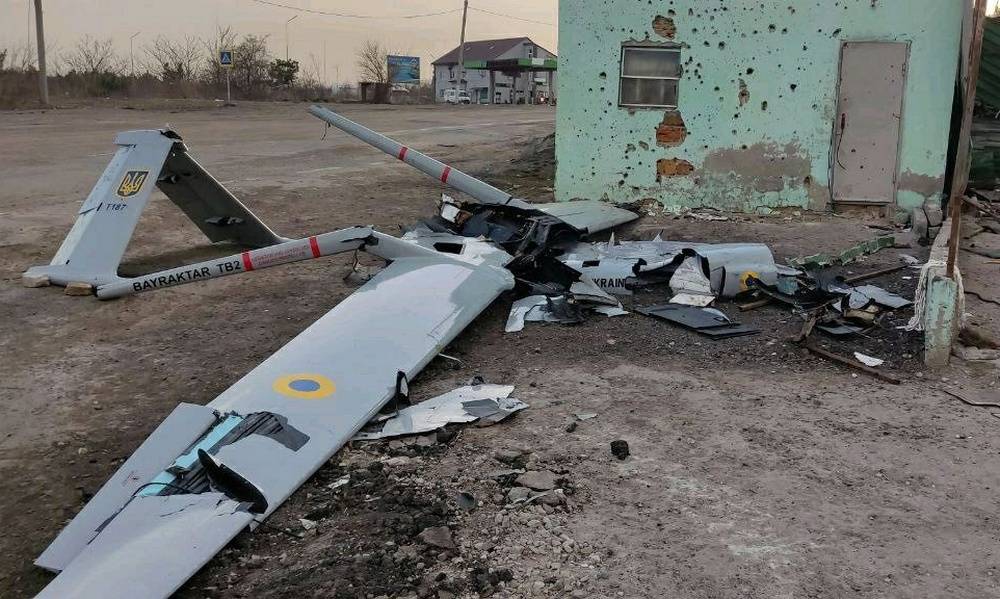
“There is more PR and corruption in Bayraktar than combat use.”
(video at link, Russian)
The head of the Association of Defense Enterprises of Ukraine, Sergei Pashinsky, said that during the first week of the special operation, the Russian military shot down ( https://t.me/rt_russian/128263 ) “all Bayraktar” of the Armed Forces of Ukraine.
He told the pranksters Lexus and Vovan about this, who called on behalf of the former US Ambassador to Russia Michael McFaul.
“They are vulnerable against air defenses strongly. You must understand that we had a lot of Bayraktar, they beat them all in a week.
He cannot work on his own. Bayraktar is not a miracle weapon, with powerful air defense systems it crashes into flight, and it has no combat effectiveness, ”said Pashinsky.
PS. Actually, confirmation of the obvious, which he wrote about during the Libyan campaign and Haftar's offensive on Tripoli. With competent modern air defense, the Bayraktars look very pale, achieving a maximum of some exchange of UAVs for air defense systems, and even in Libya they fought against old modifications of the Pantsir. In Ukraine, they met with more serious systems and the result was a little predictable. Therefore, now there is a lot of noise about the "Geran" and almost nothing is heard about the success of the "Bayraktar", which remains quite a suitable vehicle, but only in conditions of weak or suppressed air defense. With unsuppressed air defense, he becomes food or is forced to work as a spotter, forgetting about the advertised shock function.
https://colonelcassad.livejournal.com/7923206.html
Before the battle for Kherson.
October 18, 20:52

General Surovikin on the course of the NMD in Ukraine.
The situation in the NWO zone is tense.
Ukrainians and I are one people and we want Ukraine to be independent from the West and NATO, to be on friendly terms with Russia.
The enemy does not leave attempts to attack the positions of the RF Armed Forces, first of all, these are the Kupyanskoye, Krasnolimanskoye Nikolaev-Krivoy Rog directions.
Ukraine is drawing all available reserves to the front. Terodefense forces dominate among them. They are sent to be slaughtered
. The enemy is a criminal regime that pushes the citizens of Ukraine to their deaths.
Every day, enemy losses range from 600 to 1000 people killed and wounded.
We do not strive for high rates of tension, we methodically grind the enemy and move forward. Protecting the lives of our soldiers and civilians
The newest hypersonic air missiles "Kinzhal" have proven themselves well in hitting targets. Russian UAVs have completed more than 8,000 sorties.
The special operation confirmed the effectiveness of the aviation systems and air defense systems in service in the Russian Federation.
The Russian group of troops is building up its strength, creating reserves and building defensive positions along the entire line of contact.
And more from Surovikin. The Ukrainian authorities use against their military detachments of nationalists who shoot anyone who tries to leave the battlefield
The Kherson direction is not an easy situation. The enemy strikes at critical infrastructure. There are problems with water and electricity supply in Kherson. This is a direct threat to their families.
The NATO leadership has long demanded offensives from the Kyiv regime. The Armed Forces of the Russian Federation will ensure the safe, already announced departure of the population under the resettlement program being prepared by the Russian government
In these conditions, our main task is to preserve the lives and health of citizens and our military personnel, this is a priority for us. We will act consciously, not excluding the possibility of making the most difficult decisions
https://t.me/boris_rozhin/67666 - zinc.
"The Ukrainian side is accumulating forces for a large-scale offensive. The Russian Federation has formed a military group to repel this offensive. Our land, peaceful cities and villages of the Kherson region can become the battlefield of this confrontation. There is an immediate danger of flooding of the territories in connection with the planned destruction of the Kakhovskaya hydroelectric dam and water from a cascade of power plants upstream of the Dnieper.In such a situation, I made a difficult but correct decision to announce the organized movement of the civilian population of Berislavsky, Belozersky, Snigiryovsky and Aleksandrovsky municipalities to the left bank of the Dnieper.
This decision was caused by the creation of large-scale defensive fortifications so that any attack was repulsed. Where the military operates, there is no place for civilians. Let the Russian army fulfill its task. Under these conditions, our key task is to save human lives and allow the troops of the Russian Federation to effectively perform their functions to protect the Kherson region. We will take the civilian population to the left bank in an organized, stage-by-stage manner.
For those residents of the region who decide to move further to the regions of Russia, the Government of the Russian Federation will provide housing certificates. This was specifically stated by the Deputy Prime Minister of the Russian Federation Marat Khusnullin. The relocation and temporary accommodation of residents of the Berislav, Belozersky, Snigiryovsky and Aleksandrovsky municipalities will be carried out free of charge, by the EMERCOM of the Russian Federation and the government of the Kherson region. I ask everyone to remain calm, not to listen to alarmists, the Kherson region remains under the reliable protection of the Russian army. Our cause is right. We know it and our enemy knows it. And victory will be ours."
Full video versions of Surovikin and Saldo's speeches https://t.me/boris_rozhin/67669
Judging by the information background, in the coming days, a tough batch will begin in the Kherson region, with massive arrivals in Kherson, Berislav, Nikolaev and the settlement. slightly less. Civilians should either evacuate or take care of personal security issues (bomb shelters, basements, etc.), as well as a supply of what is necessary in case of serious destruction of the socio-economic infrastructure.
Will start in the next few days.
Google Translator
******************
From Cassad's Telegram account:
***
Colonelcassad
Special operation of the Russian Federation, October 18. The main thing from RIA Novosti :
***
forwarded from
Ramsay
We continue our conversations with "Ace":
- The clock at the command of the Armed Forces of Ukraine is ticking. In December-January, three to five Russian corps will appear at the front, with the prospect of three more by February. This is much more than what Ukraine can prepare in the same time.
And this means that the Armed Forces of Ukraine urgently need, blood from the nose, to solve their main task, which was set at the very beginning of the September offensive - to take Kherson and knock out the RF Armed Forces from the right bank of the Dnieper. The success near Kharkov in terms of propaganda was more than successful, but in strategic terms it changed little, except for reaching the border with the Russian Federation. No "cauldrons", no impressive defeats. The Russian troops simply withdrew and sealed the defenses. Further attempts to advance did not lead to any serious advances, while the troops suffered significant losses in men and equipment and largely lost their offensive potential. But now to stand on the strategic defensive means to abandon the main strategic task - the liquidation of the Russian right-bank bridgehead in the Kherson region. And because the Armed Forces of Ukraine will be forced to throw all the reserves they have on Kherson. The task is adventurous, but not impossible. If we send the reinforcements now coming from Britain and Poland (up to 15,000 soldiers and officers) not to further staffing the second reserve corps near Lvov, but to resupply the already fighting brigades, as well as transfer part of the equipment from Lvov - tanks and artillery, then in a short time, it will be possible to again bring the strike force to a strength that allows us to count on a successful breakthrough of the Russian defense. The key issue here is ensuring secrecy in the choice of strike sites, surprise and numerical superiority in breakthrough areas. and also to transfer part of the equipment from near Lvov - tanks and artillery, then in a short time it will be possible to again bring the strike force to a strength that allows us to count on a successful breakthrough of the Russian defense. The key issue here is ensuring secrecy in the choice of strike sites, surprise and numerical superiority in breakthrough areas. and also to transfer part of the equipment from near Lvov - tanks and artillery, then in a short time it will be possible to again bring the strike force to a strength that allows us to count on a successful breakthrough of the Russian defense. The key issue here is ensuring secrecy in the choice of strike sites, surprise and numerical superiority in breakthrough areas.
I am still convinced that the APU will deliver two strikes - the main and auxiliary (distracting). Auxiliary to Vasilievka with a turn to Tokomak in order to pull our reserves and artillery and the main one to Kherson.
In fact, the Armed Forces of Ukraine will invest everything in this strike, hoping, if successful, to go on the defensive in the south along the Dnieper and, taking advantage of the mudslides and winter time, complete the formation of a new corps near Lvov by mid-January.
Zaluzhny and the General Staff of the Armed Forces of Ukraine place their main stake on the great combat experience and skill of the "South" command.
If the offensive fails, then the Armed Forces of Ukraine will have no choice but to switch to strategic defense with the prospect of losing Seversk, Bakhmut, Avdeevka and Kramatorsk by the end of December.
The start of active hostilities can be expected in the middle of next week, as soon as the units of the Armed Forces of Ukraine are replenished with "British" and "Poles", as well as new artillery and MLRS from Europe and the USA will be transferred to the front.
***
forwarded from
Voenkor Kitten Z
Military expert Boris Rozhin on the main points during the special military operation of the Russian Federation in Ukraine at 19.47 Moscow time on 10/18/2022 especially for the Voenkor Kotenok Z @voenkorKotenok channel :
1. Donetsk direction.
Positional battles in the area of Avdiivka, Maryinka , Vugledar . There are no significant moves.
Fights for Pervomaiskoye continue . The pace of progress there is not very high.
2. Artemovsk direction.
Fighting continues for Experienced and on the eastern outskirts of Artemovsk . Also, our troops are advancing south of Artemovsk,trying to move south of the city and cover it. The enemy is moving additional reserves here and rotating battered units.
3. Soledar-Seversk.
No significant changes.
In Soledar - street fighting in the industrial area. Counterattacks of the Armed Forces of Ukraine north of Soledar were not successful.
In the area of disputed and Belogorovka - positional battles.
4. Kremennaya - Svatovo .
Fighting continues in the area of the villages of Terny and Torskoye . Torskoye under the Armed Forces of Ukraine.
The enemy is throwing up reserves here in order to strengthen the defense and, having repelled the counterattacks of our troops, try to resume the offensive onKremennaya .
In the Svatovo area , our troops slightly pressed the APU, recapturing one village. But as expected, the enemy did not abandon his intentions to break through to Svatovo in the coming weeks.
5. Kherson .
At the front, the situation has not yet changed significantly, but there has been an increase in the evacuation of the civilian population from Kherson , which hints at an imminent intensification of fighting in the light of the expected resumption of attempts by the Armed Forces of Ukraine to attack Berislav and Kherson . The offensive is likely to begin before the US midterm elections in early November.
6. Zaporozhye.
At the front, no significant changes so far, positional battles. But there is a serious accumulation of enemy forces that can take offensive actions in the direction of Vasilyevka (with supporting troops in Energodar and ZNPP ), Tokmak and Pologov .
https://t.me/s/boris_rozhin
Google Translator
******
Interview with the Commander of the Russian Army in Ukraine, General Sergei Surovikin
Posted by INTERNATIONALIST 360° on OCTOBER 18, 2022
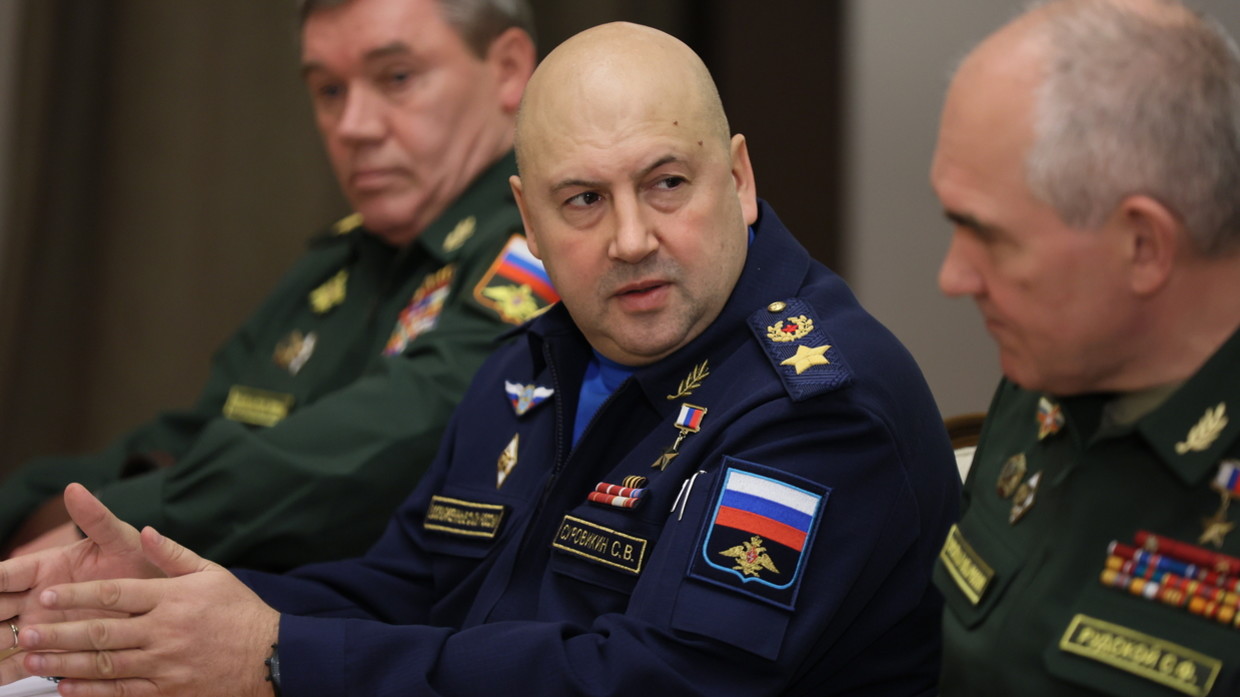
Notes of interview with Commander of Joint Group of Troops (Forces) in special military operation area General of the Army S.Surovikin (18 October 2022)
Good afternoon, Mr. Surovikin! You were appointed the Commander of the Joint Group of Troops in the area of the special military operation by a decree of the Minister of Defence of the Russian Federation. A lot of Russian citizens are concerned about the current situation.
The situation in the area of the special military operation can generally be described as tense.
The enemy does not leave attempts to attack the positions of Russian troops. First of all, it concerns Kupyansk, Krasny Liman and Nikolayev–Krivoy Rog direction. Our enemy is the criminal regime that pushes Ukrainian citizens to death. The Ukrainians and we are one people and we wish Ukraine to be a friendly State for Russia, independent on the West and NATO.
Ukrainian regime indends to break our defence. With this purpose, the Armed Forces of Ukraine (AFU) are bringing all their reserve forces available to the frontline. These are usually territorial defence units that have not been completely trained.
Ukrainian leadership is actually condemning them to death. These kind of units usually have low morale. To prevent desertions from the frontline, Ukrainian authorities involve blocking detachments manned by nationalists who shoot everyone who tries to abandon the battlefield.
The enemy suffers everyday casualties from 600 to 1,000 people.
We follow a different strategy. It has already been mentioned by the Supreme Commander-in-Chief.
We do not seek high rates of advance, but save every soldier and methodically ‘grind down’ the attacking enemy. Not only do we minimise our casualties this way, but also considerably reduce the number of victims among civilians.
The Joint Group of Troops is currently taking measures to increase the combat and numerical strength in units and formations, to create additional reserve forces, to prepare defence lines and positions along all the line of contact.
We continue launching attacks with high-precision armament at the military and infrastructure facilities that influence on the combat effectiveness of Ukrainian troops.
Apart from being appointed the Commander of the Joint Group of Troops (Forces) in the area of the special military operation, you remain the Commander-in-Chief of the Aerospace Forces. How would you describe the effectiveness of Russian aviation and air defence forces?
The special military operation has proved the effectiveness of the air systems and air defence facilities available.
Crews of operational-tactical, army and long-range aviation have performed over 34,000 combat flights during the operation. They have launched over 7,000 guided airpower ordnance. The cutting-edge Kinzhal ultrasonic air missiles have proven themselves well in neutralising facilities. There is no enemy air defence system that would scare us. Highest precision has also been shown by air-based strategic cruise missiles.
As for the operational quality, I want to distinguish Su-57 multipurpose airplane of 5th generation. Fitted with a wide range of armament, it performs multifaceted tasks related to the neutralisation of air and ground targets.
Unmanned aviation has performed over 8,000 flights, while attack drones have destroyed over 600 AFU facilities.
Several days ago, the interim governor of Kherson region Vladimir Saldo stated that the authorities had decided to organise the possibility to leave the region to other parts of the Russian Federation for recreation or studying. It primarily concerns the right shore. The head of the region stated that these measures were taken to provide safery of civilians amid frequent attacks of the AFU. How would you comment on this decision?
There is a difficult situation at the abovementioned direction. The enemy launches deliberate attacks at infrastructure facilities and residential buildings located in Kherson. Impacts of HIMARS rockets have damaged Antonovka bridge and the dyke of Kakhovka hydroelectric power plant where the traffic is currently stopped.
It has resulted in impeding alimentation deliveries; certain problems have been recorded in supplying water and electricity. All of these not only complicates the residents’ everyday life, but also poses a direct threat to their lives.
NATO leadership that leads the Armed Forces of Ukraine has long demanded the Kiev regime to conduct offensive operations towards Kherson, regardless of any casualties: neither in the AFU, nor among the civilian population.
We have got data on the possible use of prohibited methods of war by the Kiev regime near Kherson, on the preparation of a massive missile attack at the barrage of Kakhovka hydroelectric power plant, as well as launching a massive indiscriminate missile and artillery attack at the city.
This action can lead to the destruction of the infrastructure of a large industrial centre and high casualties among civilians.
In these conditions, our primary task is to save lives and health of civilians. That is why, first of all, the Russian army will provide safe departure of the population according to the resettlement programme that is currently being prepared by the Russian Government.
Our further plans and action regarding the city of Kherson itself will depend on the military and tactical situation.
I repeat: has already become very difficult.
Anyway, as I have already said, we will proceed from the necessity to maximally save the lives of civilians and our personnel.
We will operate consciously, promptly, not excluding making difficult decisions.
t.me/mod_russia_en
https://libya360.wordpress.com/2022/10/ ... surovikin/
Russian Communist Party Statement on the Situation in Ukraine
Posted by INTERNATIONALIST 360° on OCTOBER 18, 2022
STATEMENT BY THE CHAIRMAN OF THE CC CPRF GENNADY ZYUGANOV
October 17, 2022
The situation in the zone of hostilities in Ukraine has recently seen a dramatic change. The terrorist acts on the Nord Stream-2 gas pipeline, on the Crimea bridge and daily shelling of the Zaporozhye Nuclear Power Plant show that the globalists would not stop at anything in order to destabilize our country. What we see today is not a special operation, but a war of the USA and its allies against Russia with the hands of Bandera Fascists.
The Western countries are providing Ukraine’s criminal regime with the latest weaponry. They are funding and training units of Ukrainian armed forces that are being formed. Their headquarters plan and control the operations of the Neo-Nazi soldiery and provide them with intelligence information. They set the targets of the strikes at Russian troops, cities and villages.
NATO experts man the control systems of precision weapons. Thousands of mercenaries are directly involved in combat. The USA and its satellites are practically financing the Bandera regime in Ukraine. As part of modern hybrid warfare they are waging an information, propaganda and economic war against Russia. The recent terrorist acts have undoubtedly been organized by American and British special services which have long been specializing in this kind of crimes.
Undisguised entry of NATO into the war against Russia is a game changer which calls for a change of the strategy and tactics of the leadership of the state and the army, and the gearing of the entire country toward ensuring victory. Considering that the LPR and DPR, as well as the Kherson and Zaporozhye oblasts, are now parts of Russia today we are fighting not in Ukraine, but on our own territory. That, too, is a new phenomenon. But we should understand that the task of liberating the people of Ukraine from the Neo-Nazi regime is still on the agenda.
The Russian armed forces are up against major challenges. However, it would be totally wrong to put all the blame for these problems on the current leadership of the Armed Forces. They deserve every kind of support and help. It is incumbent upon us to give an objective and stern assessment of those who have over many years been undermining Russia’s defense capability.
The defense industry and science have been dramatically weakened. Thoughtless and sometimes downright subversive privatization has led to the liquidation of many strategic enterprises. Incidentally, the process of deliberate bankruptcies continues to this day.
Society has been forced to assume the solution of many supply problems faced by the fighting army. All honor and praise to the millions of patriots in all the corners of our land who have undertaken to purchase and deliver to the army various equipment, food, clothing, night vision instruments, UAVs, drugs and medical equipment. Yet all this is the duty of the state and its relevant bodies. In 1941-1945, too, there was a flow of parcels to Red Army soldiers from the rear of the country. But the state fully supplied all the army needed.
The recent years have seen a number of measures to rebuild the Armed Forces and the defense industry. However, the damage caused by the liberal “reformers” and “the fifth column” has been so great that it would take years to make up for it. Society expects that those who are to blame for the current serious problems of our army and have treacherously undermined its defense capability will be severely punished.
Public opinion makers have gravely damaged Russia’s combat readiness. Years of pursuing the course for suppressing patriotism, foisting Western “values” that are alien to our people as well as fraudulent elections were bound to entail dire consequences, as witnessed by thousands of young men dodging draft. The blame lies not only with them but also with those who have deliberately been turning our youth into rootless cosmopolitans.
Intensification of hostilities, NATO openly joining the war against Russia have revealed the existence of forces which, wittingly or unwittingly, impede the solution of the problems facing our country and army. Part of the bureaucracy, especially in the economic and financial spheres, is behaving with such unconcern as if there were no special military operation, as if this operation has not developed into NATO’s war against Russia. This is beginning to look like sabotage. Urgent legislation needs to be taken to punish those responsible for this, including for inaction of public office holders at a time when urgent crucial decisions need to be taken.
Amid growing military threat to the country the unity of society is vital. It is not the army but the whole country that is at war. Each and every one today must take on board the slogan of our great ancestors: “Everything for the front, everything for victory.” However, genuine consolidation of the social forces can only be achieved through a change of course for one that is socially oriented. Justice, collectivism and mutual help are the cornerstones of our society. It is necessary to immediately introduce a progressive taxation scheme and repeal the decision to raise the retirement age.
The battle should be waged not only against external enemies, but also against internal enemies of Russia, the management crisis, economic lag, widespread impoverishment, and an appalling social split. Criminal greed and thievish irresponsibility of the oligarchy. Against Russophobic and anti-Soviet intrigues of “the fifth column” in the sphere of culture, education and propaganda. In the 20th century this battle was brilliantly won by the Soviet Power which accomplished Leninist-Stalinist modernization within the shortest possible time. Putting an end to exploitation, joblessness and illiteracy, rapidly industrializing the economy. Outstanding peaceful accomplishments of socialism provided the foundation of our victory over Hitler’s brown plague. It is high time to understand the meaning of this historical lesson and realize that new victories can only be won by changing the course in favor of socialism, justice, equality and genuine responsibility of power and the citizens for their country.
Nationalization of strategic spheres of the economy, maximum support for its innovation-driven development, dissemination of the experience of people’s enterprises, social protection of the citizens, free and high-quality medical care and education – this is the foundation of our initiatives and proposals. This is the program of victory which needs to be adopted at the state level. Without it, it is impossible to administer a crushing rebuff to those who seek to destroy the Russian World and wipe the state born of it off the face of the Earth. In the conditions when the country has arisen to defend its sovereignty and independence, when hundreds of thousands of young men are going to the front, everyone must do one’s utmost to defeat Neo-Nazism and Bandera followers who have the backing of the USA and its NATO satellites.
The CPRF and the patriotic left in Russia are confident of winning the battle against the same enemy that came to us in June 1941, that is, the united forces of the aggressive West. Back then these forces were led by Hitler’s Germany. Today it is the USA, Great Britain and their vassals. If this struggle is to be successful, there needs to be a total concentration of all our resources and spiritual strength. The Russian leadership must take all the measures that it calls for.
Chairman of the CC CPRF
Gennady Zyuganov
cprf.ru
https://libya360.wordpress.com/2022/10/ ... n-ukraine/
